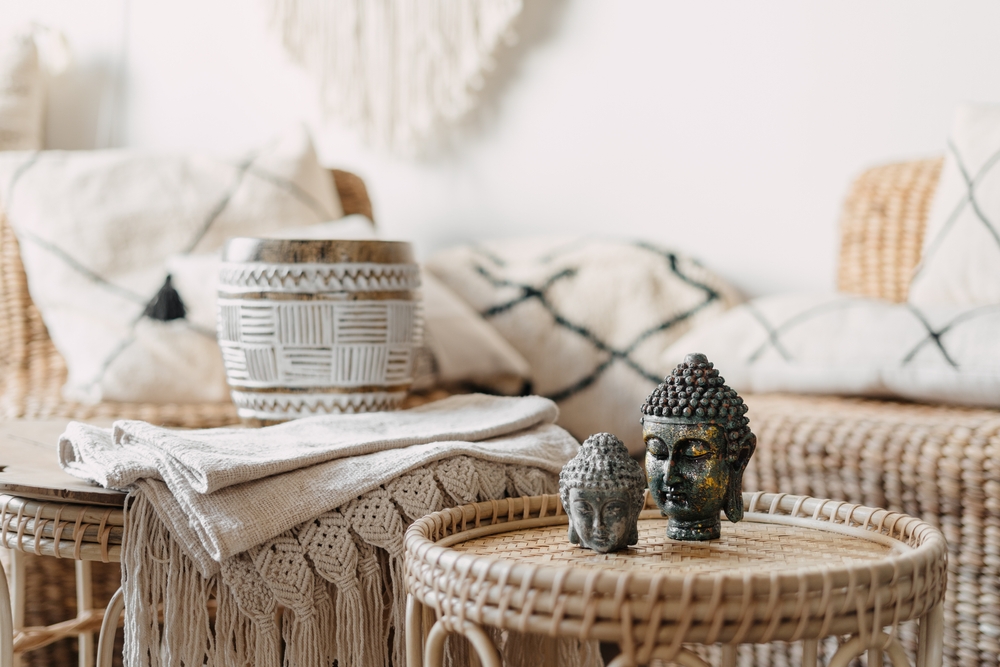Statues of the Buddha embody the very essence of peace and tranquillity and inspire us to find our own inner calm. It’s said that when he was struggling to find the true meaning of life, Prince Siddhartha achieved self-realization and attained enlightenment, becoming the ‘Buddha’ or ‘the awakened one’. Statues of the Buddha are an expression of this awakening—and the different poses of Buddha statues, along with the different hand gestures or Mudras, represent various stages in the life of Buddha.
Here, we explain the significance behind each such Mudra, so you can make informed choices in your own home!
Buddha as the Protector
The Protection Buddha embodies courage and is seated in the Lotus pose, with the right hand raised and facing outward (representing a shield) and the left hand extended out or resting on the lap. This pose offers protection from all forms of fear, negative delusions, and anger.

Buddha as a Teacher
After attaining enlightenment, Buddha would preach to all his disciples, teaching them about suffering and the ways in which it could be overcome. The Teaching Buddha statue holds the right hand in the vitarka (teaching or discussion) mudra, with the thumb and index finger of the right-hand touching and forming a circle. The left hand may be positioned close to the lap and has the palm upwards as if to receive. This mudra represents deep wisdom and comprehension, and the fulfilling of one’s destiny. A statue of the Teaching Buddha would be apt for a student or anyone who is in spiritual pursuit.
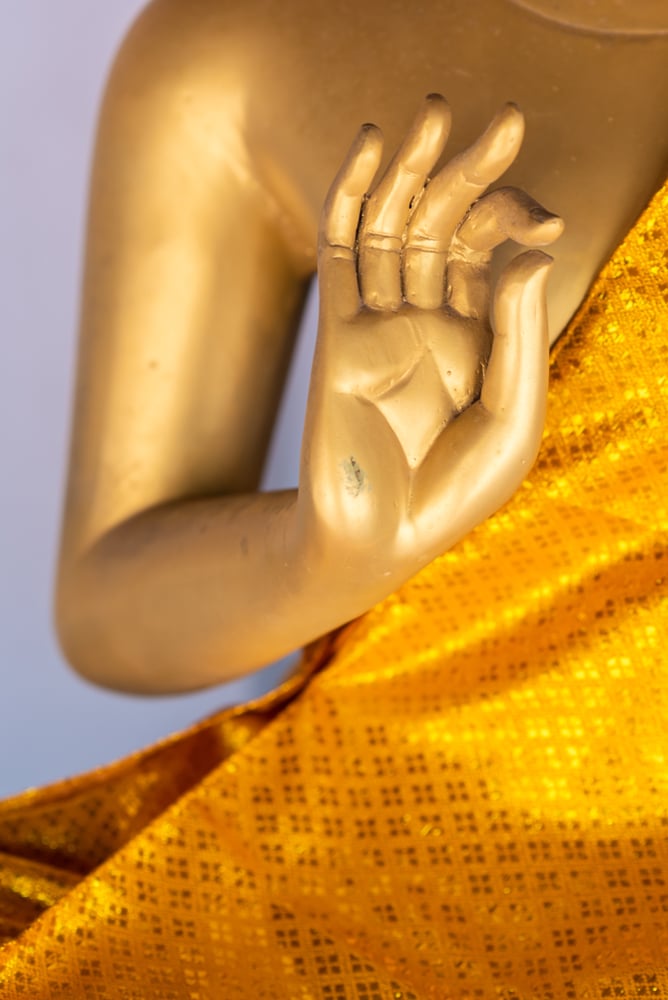
Dreaming Buddha
In this pose, Buddha’s hands and head are resting on one knee, which is drawn up against his chin, and his eyes are closed. This pose exudes a state of total relaxation and tranquillity, and signifies the restfulness and calm that one can attain through the practice of meditation. The pure stillness of the moment is captured beautifully in the peaceful expression on the face. This Buddha statue is perfect for a meditation corner or a Zen garden.
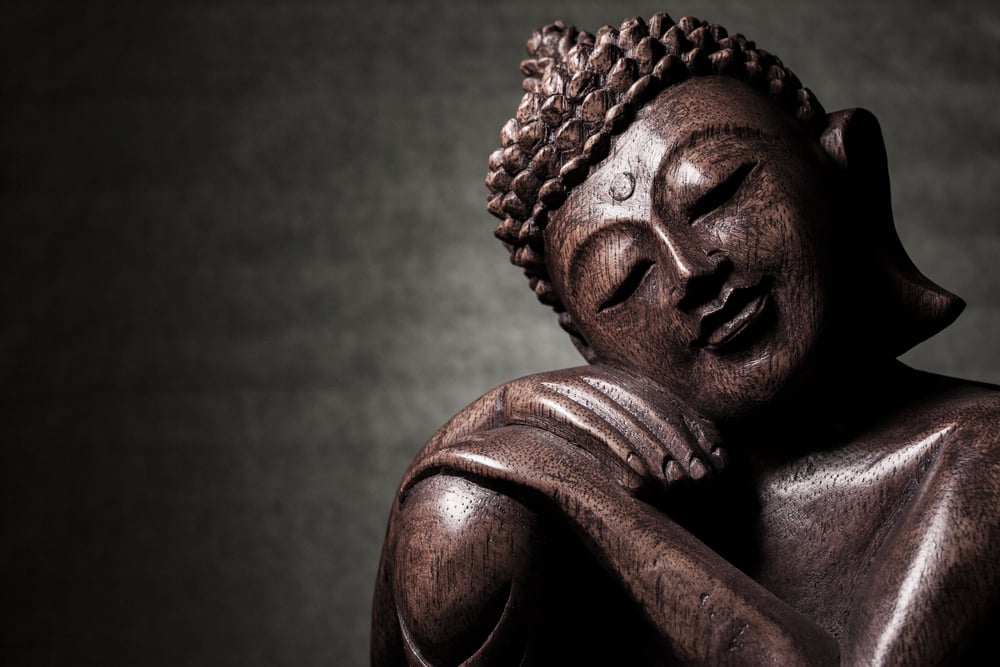
Reclining Buddha
Also referred to as the Nirvana Buddha, this pose depicts Buddha in his last days on earth after achieving enlightenment, as he awaited the journey to Parinirvana (or salvation). Buddha lies atop a table, resting peacefully on his right arm. Buddha teaches that a life well lived will lead to Moksha or freedom from the cycle of birth and death. This pose represents his journey toward salvation, where there is no rebirth.
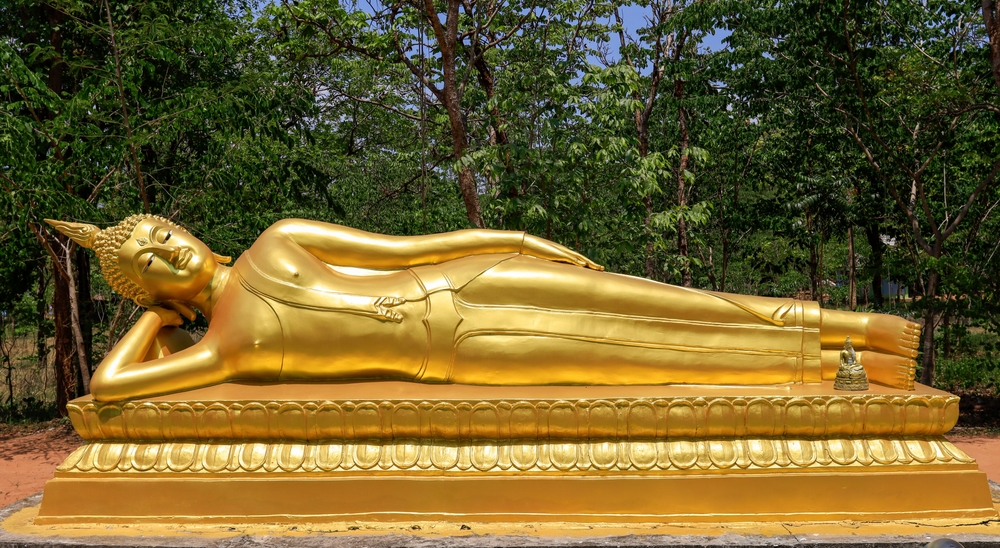
Meditation Buddha
The very essence of peace, Meditation Buddha sits in a Lotus pose with both palms facing upwards in the lap. The eyes are half or fully closed in stillness and concentration. The outline of the statue is a perfect triangle, with a broad base that symbolizes stability and connection to the earth. Place this statue in your Meditation or Prayer room, and sit in front of it to recalibrate and rebalance yourself after a tiring day.
Read more: Meditation Room Designs to Boost Wellness
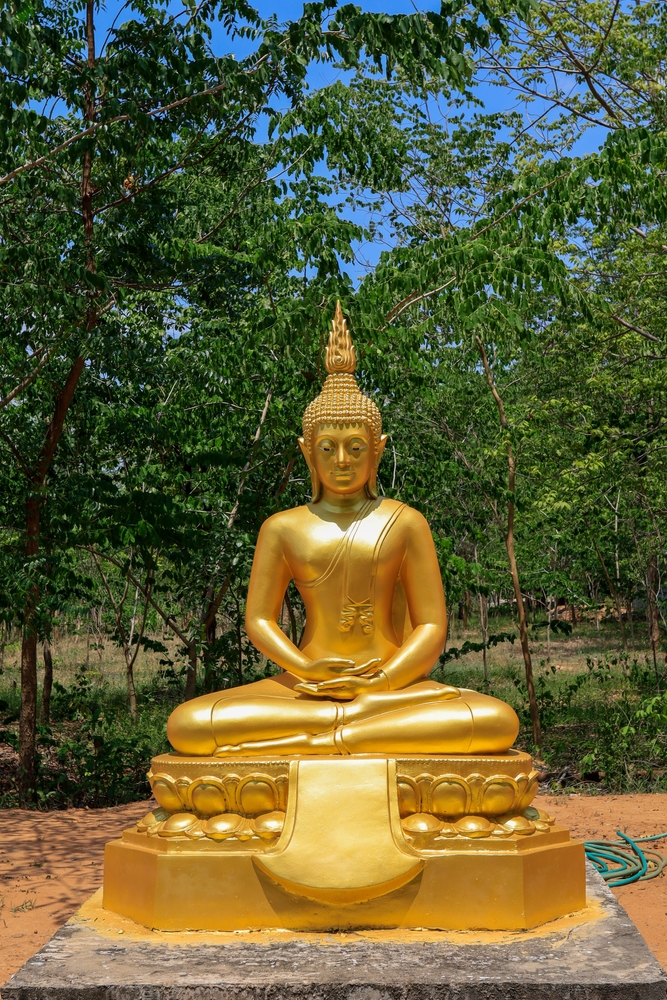
Buddha Calling the Earth Goddess
One of the most popular poses in temples in Thailand, the statue of Buddha calling the Earth Goddess represents the moment when Buddha achieved enlightenment under the Bodhi (peepul) tree. Legend goes that the evil demon Mara tried to seduce the meditating Prince Siddhartha as he sat under the tree, but did not succeed. The Prince touched the earth with his right hand, calling the Earth Goddess as a witness that he had achieved enlightenment, and she is said to have sent floods that swept away the demon Mara.
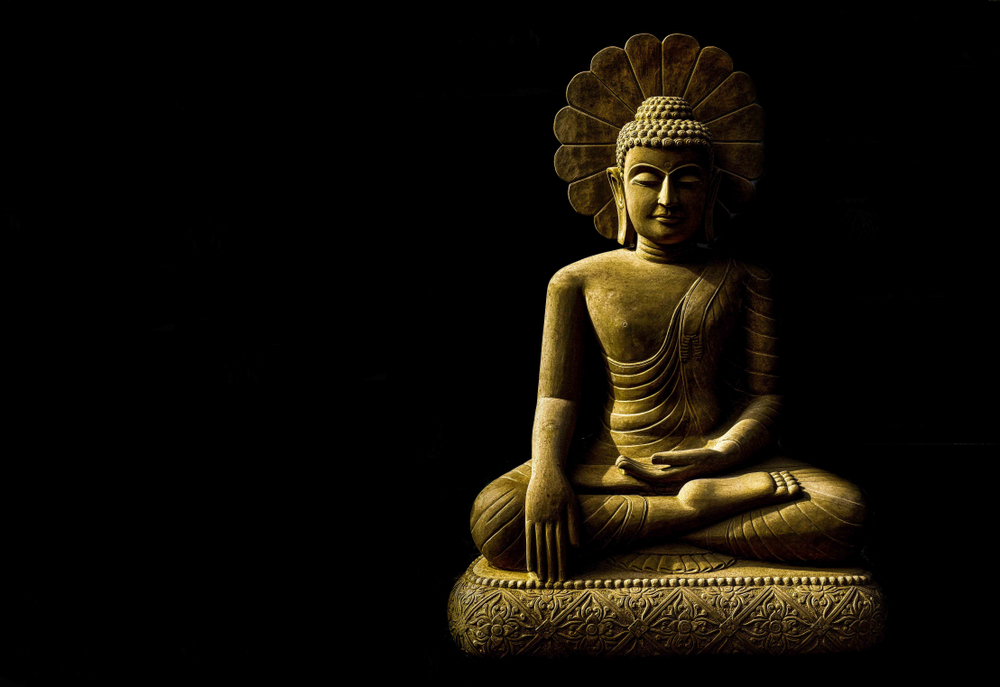
Walking Buddha
Buddha walks with utmost grace and beauty, with the right hand raised in blessing and reassurance that everything is going well, palm facing outward, and the left hand swinging at the side. One foot is behind the other. It is said that this statue signifies Buddha walking back after a sermon. This statue can be placed in a garden, on a pedestal.
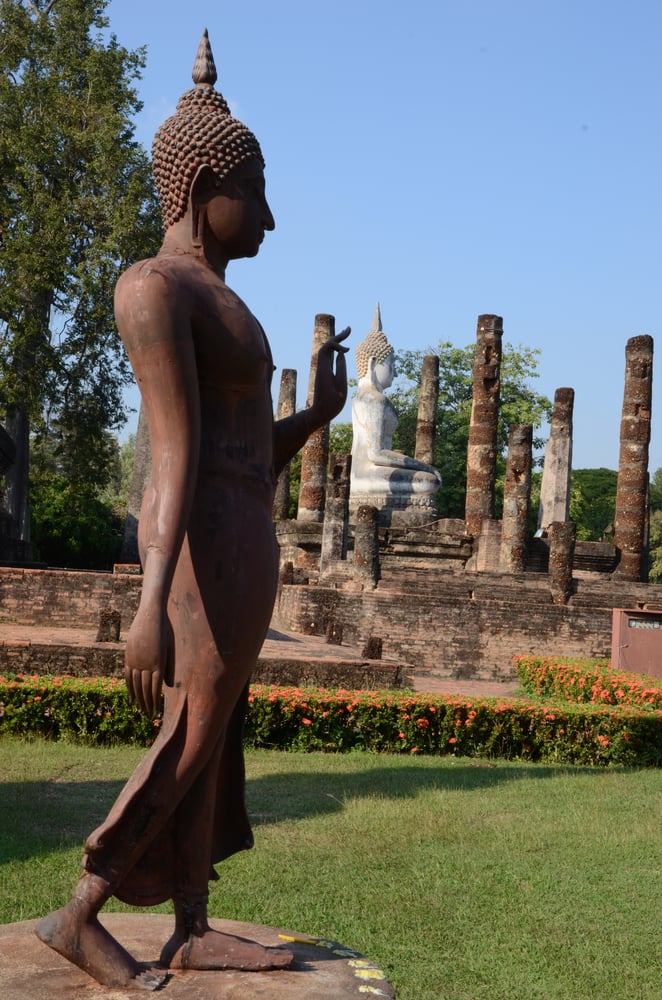
Medicine Buddha
Medicine Buddha is commonly found in places of healing and prayer rooms, as it promotes wellness and removes negative energies in your home. In this pose, Buddha holds the right hand facing downwards with fingers extended toward the ground and the tips of the index finger and thumb in a circle. The left-hand holds a bowl of herbs. In many places, this Buddha is depicted with blue skin and has deep-blue Lapis Lazuli stones set into the statue.
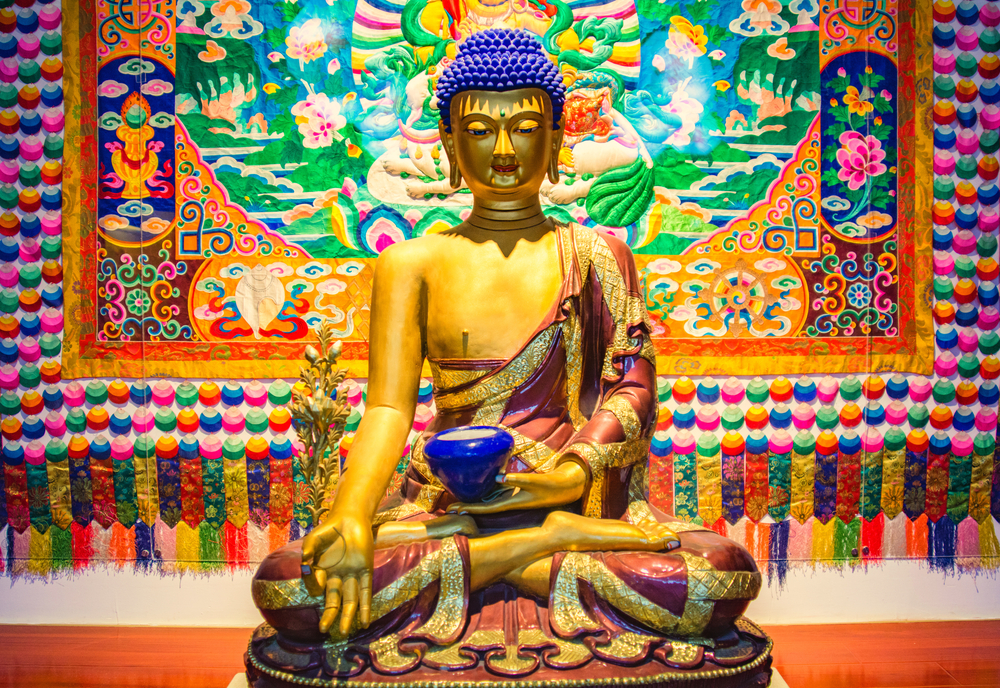
Contemplation Buddha
Buddhist Dharma Contemplation, as a practice, is closely aligned to Buddha’s core teachings. This statue is represented by the Buddha holding both arms against the chest, with the right arm outside the left and both palms facing inwards. This pose promotes humility and tolerance and speaks of the determination to attain deeper spiritual levels.
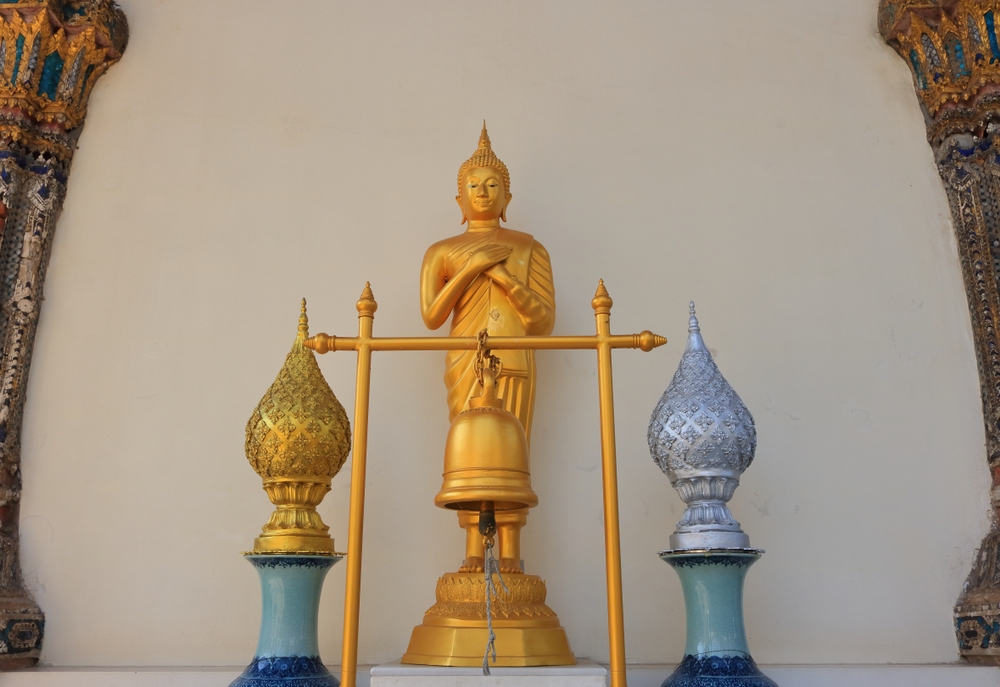
Which Buddha mudra is right for you? There are many different ways in which Buddha is depicted, and you should find a statue that holds special meaning for you. It’s often said that the sculpture chooses you and not the other way around, and when you find the right piece you will know! The energy that your Buddha statue gives out will help in your own personal healing journey, and give you all that you seek easily and effortlessly.
To know more about how to incorporate a Buddha statue in your home décor and live a more mindful life, do reach out to the HomeLane team. We’re always ready to help you create the home of your dreams!

